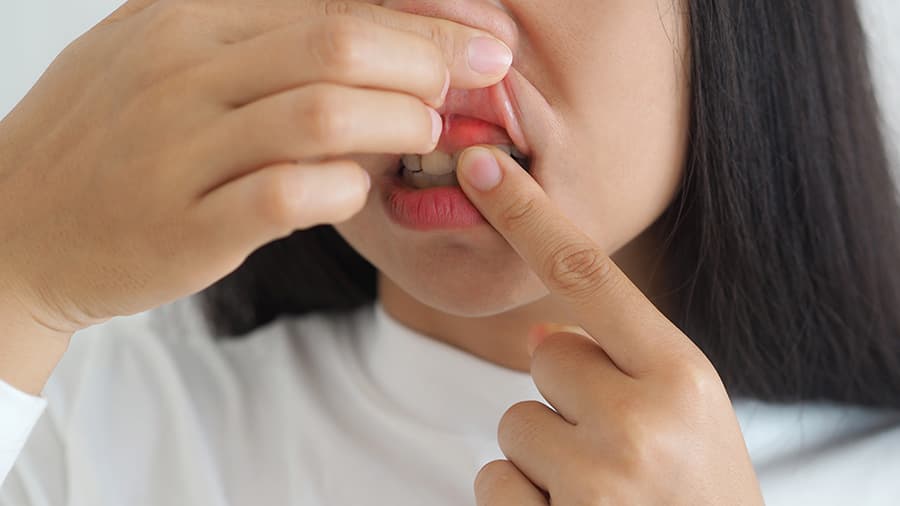Do I Have an Abscess?
Although tooth decay or a periodontal infection can be hard to detect at first, it's usually very easy to tell when an abscess forms. The biggest symptom is intense pain. National Oral Health Programme explains that symptoms of dental decay and abscess includes pain on chewing on that particular side, food lodgement on or in between the teeth, sensitivity on consuming hot/cold food, swelling, referred pain, severe discomfort and associated fever on leaving the decay untreated for a long time. You might experience trouble chewing, sensitivity to hot or cold foods and even swollen lymph nodes – which help fight infection throughout the body.
You might also be able to feel the abscess in your mouth. In the case of a periodontal abscess, a lesion will form in the affected area. A small bump that looks like a pimple can also form on the gum near a tooth abscess.
What Should I Do?
See your dentist when you suspect or discover either type of abscess. Until your appointment, practice swishing with salt water to help ease the pain. Your dentist might also recommend taking an over-the-counter pain medication.
The first step in treating either a tooth or gum abscess is to drain the bacteria from the pocket and clean the area. Your dentist will most likely prescribe antibiotics to kill any remaining bacteria. Take the medication as directed for the best results.
The next step in treatment depends on the location of the abscess. The Indian Dental Association explains that deep inside the tooth is a soft mass of tissue called the pulp. If the tooth is damaged - either by injury or decay - it may cause the pulp to get infected. If this happens, your dentist may carry out a root canal treatment. During this process, the dentist will remove the pulp from the centre of the tooth, clean the area out, then fill the canal up and add a crown to support the tooth so it looks healthy and natural.
Treating a periodontal abscess involves seeing a periodontist to assist in draining the infection and providing a deep cleaning to the area with scaling and root planning. The process removes plaque and tartar from the surface of the tooth and from below the gumline. The Indian Dental Association explains that in the process of treating a periodontal abscess - the abscess will be drained and the periodontal pocket cleaned. The surfaces of the root of the tooth will then be smoothed out by scaling and smoothing (planing) below the gum line. This helps the tooth heal and prevents further infections from occurring. An antibiotic may be prescribed to eliminate the infection. If the bone or gums are severely damaged from periodontal disease, a patient might need surgery to clean the infection from the bones and supporting tissue in order to keep an abscess from returning.
How Do I Keep It from Coming Back?
Once a dental abscess has been treated and resolved, practicing good oral care at home can help keep the issue from occurring again. Choose a toothpaste that offers germ-fighting protection and helps prevent tartar buildup. No matter what you do at home, it's always a good idea to see your dentist regularly, at least twice a year. If you have a history of infection in gums, your dentist might want to see you more often to make sure your gums stay healthy.
Getting treatment for a dental abscess is one of the best things you can do for your health. Untreated, the condition can cause further infection. With consistent care, it usually goes away, leaving you with a clean and healthy-looking smile.






